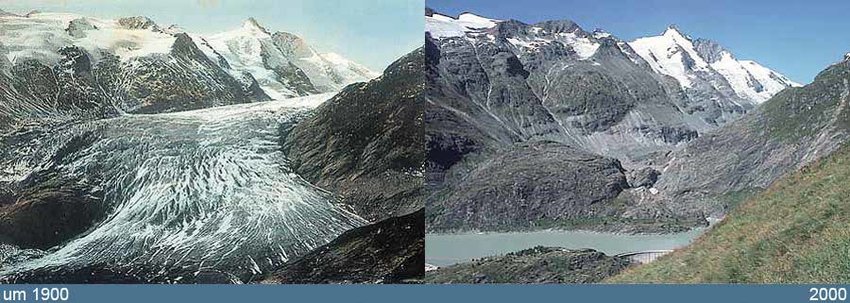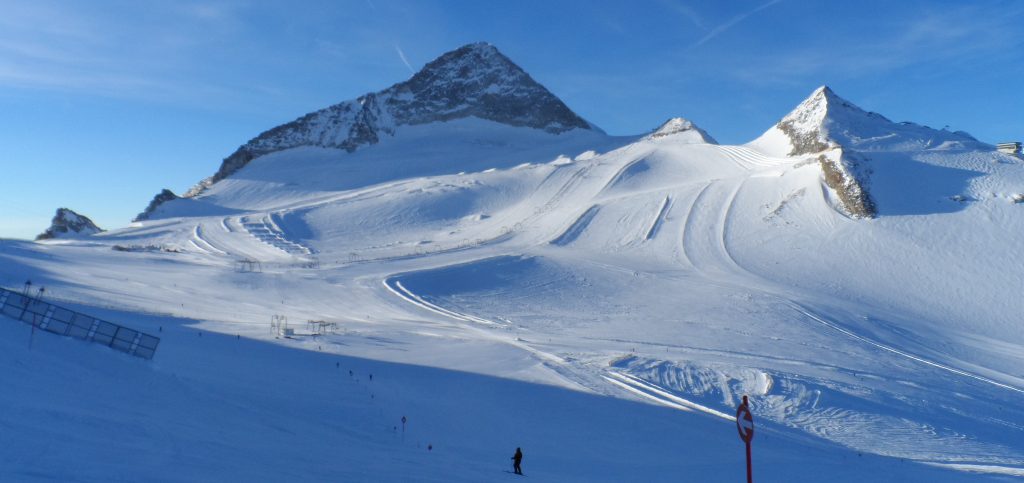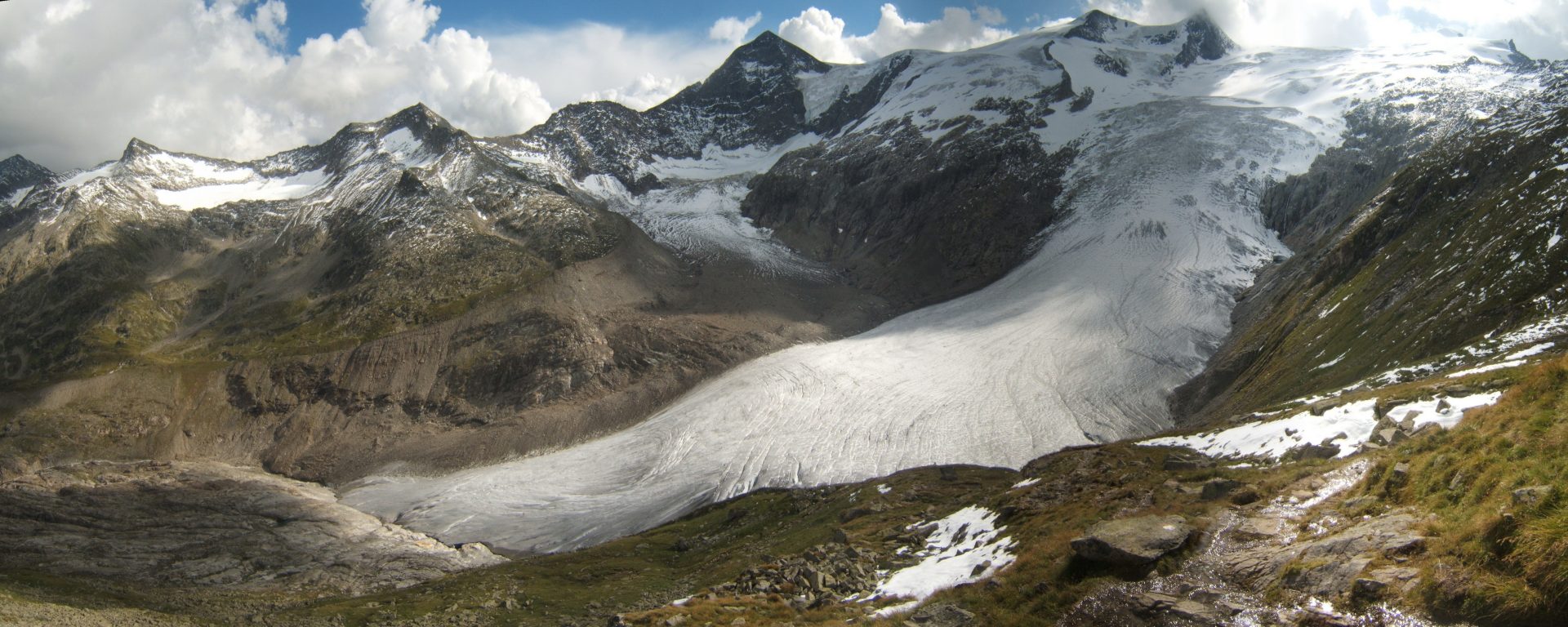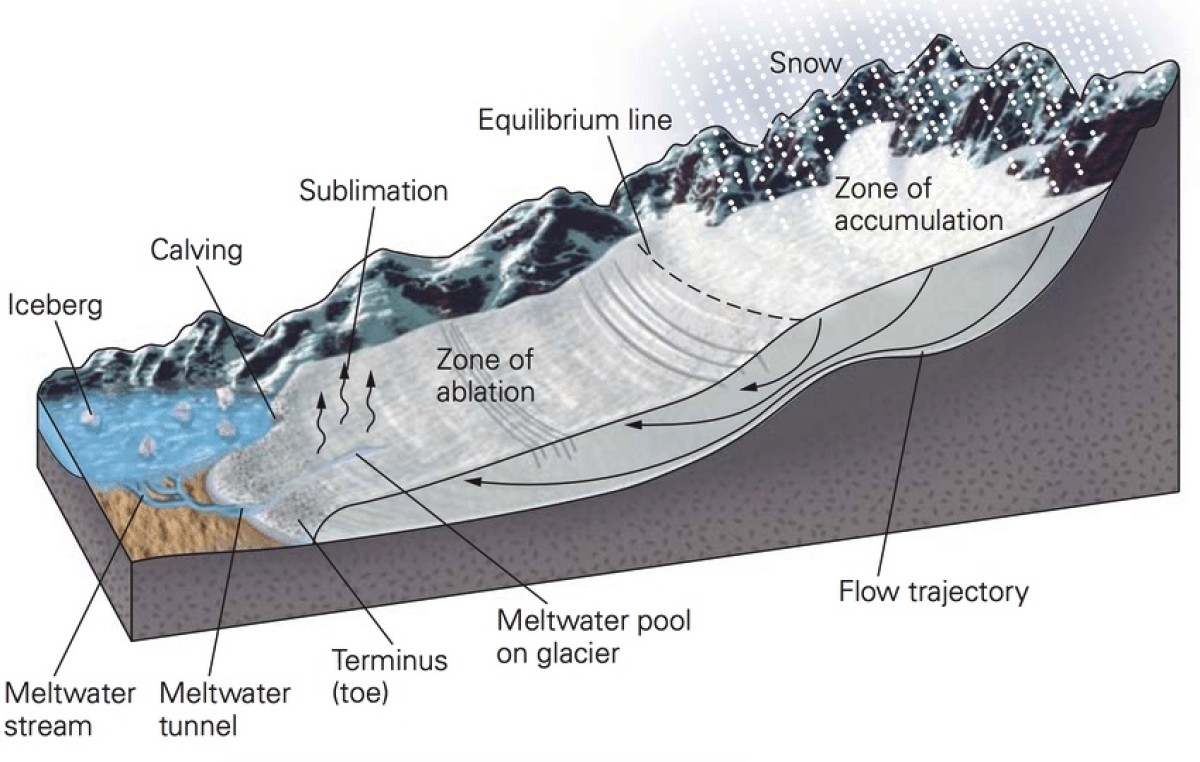
In a recent report by the Austrian Alpine Club, it was determined that glaciers across the Alps are melting at twice the global average. The report also noted that of the 93 glaciers measured and observed in Austria, all but one shrank in 2022-2023. Not only did nearly all the glaciers shrink, but it was the third-highest figure of shrinkage in the club’s 133 years of measurements.
Of those 93 glaciers, 79 of them were measured and 14 were observed. The 79 glaciers measured both last year and the previous year averaged 23.9 meters (78.4 feet) shorter each year. The retreats of the other 14 were observed using photos, therefore a precise shrinkage rate was not determined.
It wasn’t just Austria. Experts in Switzerland said on PlanetSki that Switzerland saw 4% of its total glacier volume disappear in 2023, the second-biggest decline in a single year on top of a 6% drop in 2022. The glaciers and the morale of those studying them are declining as well. Gerhard Lieb, the co-leader of the Austrian Alpine Club’s glacier measurement service, said in the report that Austria’s glaciers can no longer be saved and their disappearance in the coming decades is “unstoppable.”

Lieb also shared in the report that the process of forming snow reserves at the upper ends of glaciers so that they can stabilize can take decades; “the time is up,” he wrote. Last year the glaciers saw an average retreat of 28.7 meters (94.2 feet), a record, and no glaciers experienced a retreat of more than 100 meters. This year, however, two glaciers experienced a retreat of more than 100 meters, one of which exceeded 200 meters. To cap off the grim report from the Austrian Alpine Club, the club anticipates Austria will be pretty much glacier-free in 40 to 45 years, with small pockets of ice being tucked away in northeast, shaded areas.
According to the AAC report, the biggest retreat was that of Austria’s biggest glacier, the Pasterze, in the Glockner mountain group in the southern province of Carinthia. The Pasterze Glacier receded by 203.5 meters (667.7 feet), followed by the Rettenbachferner Glacier by 127.0 meters (416.7 feet). The entire top ten glaciers are listed below:
Top Ten Receding Glaciers in Austria
- Pasterze (Carinthia, Glockner group) -203.5 meters
- Rettenbachferner (Tirol, Ötztal Alps) -127.0 meters
- Sexergertenferner (Tirol, Ötztal Alps) -93.7 meters
- Schlatenkees (Tirol, Venice Group) -92.8 meters
- Fernauferner (Tirol, Stubai Alps) -68.0 meters
- Gepatschferner (Tirol, Ötztal Alps) -67.0 meters
- Freiwandkees (Tirol, Glockner Group) -65.8 meters
- Marzellferner (Tirol, Ötztal Alps) -49.9 meters
- Frosnitzkees (Tirol, Venice group) -46.0 meters
- Alpeinerferner (Tirol, Stubai Alps) -43.4 meters

Austria has the highest number of glacier ski resorts in the Alps. Once the glaciers throughout the Alps completely melt, roughly 85% of Europe’s ski resorts will also disappear.
It won’t be just the local ski resort disappearing. In a recent study published in Nature Ecology & Evolution, researchers analyzed the threat glacier melt imposes on the 15 alpine river invertebrate species that call the European Alps home. The study summarized the findings:
“Glacial influence on rivers is projected to decrease steadily, with river networks expanding into higher elevations at a rate of 1% per decade. Species are projected to undergo upstream distribution shifts where glaciers persist but become functionally extinct where glaciers disappear completely. Several alpine catchments are predicted to offer climate refugia for cold-water specialists. However, present-day protected area networks provide relatively poor coverage of these future refugia, suggesting that alpine conservation strategies must change to accommodate the future effects of global warming.”
While alpine river invertebrates may seem like a minuscule issue in the grand scheme of things, they provide a perfect example of how fragile the ecosystem is and how widespread the effects of climate change are. The effects of glacier retreat will ripple through the ecosystem, affecting the biodiversity, food chain, and landscape of the region. As the hope of preventing glacier retreat diminishes, understanding our ecosystem and preparing for the change becomes of increasingly greater importance.
